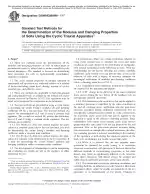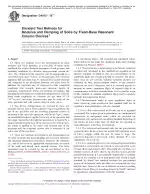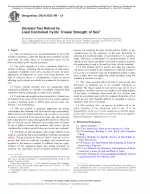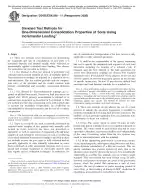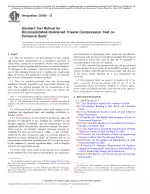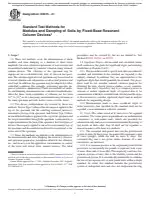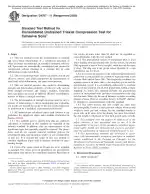ASTM D3999/D3999M-11e1 PDF Download
Standard EN SampleStandard Test Methods for the Determination of the Modulus and Damping Properties of Soils Using the Cyclic Triaxial Apparatus
Also Known As:
ASTM D3999/D3999M-11e1 is a set of standard test methods for determining the modulus and damping properties of soils using the cyclic triaxial apparatus. These methods can be applied to both intact and reconstituted soils, and they are specifically designed for soils in hydrostatically consolidated, undrained conditions. The standard provides two test methods: Test Method A, which involves applying a constant cyclic load to the test specimen, and Test Method B, which involves applying a constant cyclic deformation to the specimen. These methods are used to determine the secant Young's modulus (E) and damping coefficient (D) of the soil.
The standard also outlines the factors that need to be considered when evaluating the cyclic triaxial properties of soil specimens, including strain level, density, number of cycles, material type, and effective stress. It specifies that the test methods are applicable to both fine-grained and coarse-grained soils and that the specimens can be either intact or reconstituted through laboratory compaction.
However, the standard also highlights certain limitations of using cyclic triaxial tests to simulate the stress and strain conditions of soil elements in the field during an earthquake. These include nonuniform stress conditions imposed by the specimen end platens, a change in the direction of the major principal stress during the loading cycle, limitations on the maximum cyclic axial stress in saturated specimens, differences in cyclic behavior between intact and reconstituted specimens, and the influence of the specimen, membrane, and confining fluid on cyclic behavior.
It is important to note that the standard does not provide specific relationships for interpreting and evaluating the test results, leaving it to the engineer or office requesting the test to develop their own. Finally, the standard includes guidelines for reporting the observed and calculated values, specifying the use of significant digits and rounding as established in Practice D6026.
| Language(s) | English |
| File Size | 542.7 KB |

